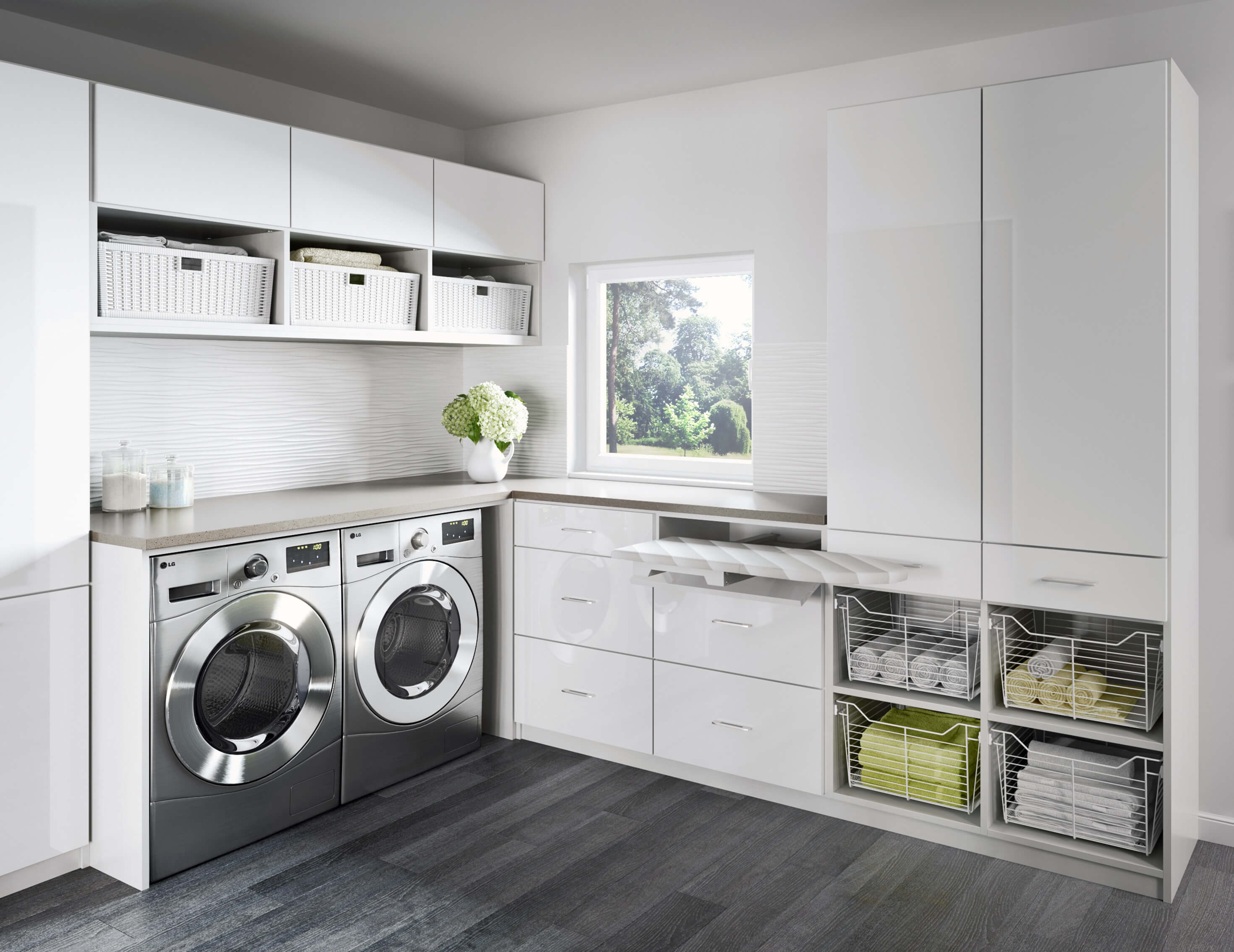Maximizing Space and Functionality in L-Shaped Laundry Room Cabinet Designs: L Shaped Laundry Room Cabinets

L-shaped laundry room cabinets offer a unique opportunity to maximize storage and efficiency in a often-underutilized space. Their design, utilizing two walls to create a corner configuration, allows for a surprisingly large amount of storage when planned correctly. The key is to optimize the available space and incorporate features that streamline the laundry process. This discussion will explore various storage solutions, design ideas, essential features, and installation steps for creating a highly functional L-shaped laundry room.
Comparison of Storage Solutions for L-Shaped Laundry Room Cabinets, L shaped laundry room cabinets
The strategic choice of storage solutions is crucial in maximizing the functionality of L-shaped laundry room cabinets. Pull-out shelves, drawers, and vertical organizers each offer distinct advantages and are best suited to different needs and cabinet configurations. Pull-out shelves, for example, provide easy access to items stored deep within the cabinet, eliminating the need to rummage through piles of laundry supplies. Drawers, on the other hand, are ideal for smaller items that need to be kept separate and organized, such as buttons, zippers, or stain removers. Vertical organizers, often utilizing tiered shelving or hanging racks, make the most of vertical space, perfect for storing folded towels, linens, or cleaning supplies. The optimal combination depends on the size and layout of the cabinets and the user’s specific storage requirements. A well-designed system might incorporate a mix of all three types for optimal organization.
Incorporating a Folding Station or Ironing Board into L-Shaped Cabinets
Integrating a dedicated folding station or ironing board directly into the L-shaped cabinet design significantly improves workflow and minimizes clutter. One effective approach involves designing a pull-out ironing board that seamlessly integrates into the cabinet’s side. The board can be stored away when not in use, keeping the space clean and uncluttered. Alternatively, a section of the countertop can be designed to serve as a dedicated folding station, potentially with built-in drawers or shelves underneath for storing folded laundry. For smaller spaces, a fold-down ironing board affixed to the cabinet’s interior wall is a space-saving option. Consider adding a small, built-in electrical outlet nearby for the iron. These solutions transform an often-overlooked area into a functional and efficient workspace.
Essential Features for L-Shaped Laundry Room Cabinets
Prioritizing functionality and efficiency when designing L-shaped laundry cabinets is paramount. A list of essential features includes ample shelving for storing detergents, softeners, and other cleaning supplies; deep drawers for storing larger items like blankets and towels; a pull-out hamper for easy access and concealed storage of dirty laundry; a designated space for sorting laundry; and integrated lighting for better visibility within the cabinets. Consider adding features like soft-close hinges and drawers to prevent slamming and ensure quiet operation. Also, incorporating durable, moisture-resistant materials is essential to withstand the humidity of a laundry room. Finally, easy-to-clean surfaces are vital for maintaining hygiene.
Step-by-Step Guide for Installing L-Shaped Laundry Room Cabinets
Installing L-shaped laundry room cabinets requires careful planning and execution. The process involves several key steps:
- Planning and Measurement: Accurately measure the space and design the cabinet layout, considering plumbing and electrical requirements.
- Cabinet Assembly: Assemble the cabinets according to the manufacturer’s instructions, ensuring all components are properly aligned and secured.
- Wall Preparation: Prepare the walls by installing wall studs or using appropriate wall anchors to support the cabinets securely.
- Cabinet Installation: Install the cabinets, starting with the base cabinets and then attaching the upper cabinets. Ensure level installation using a level and shims.
- Plumbing and Electrical Connections: Connect the plumbing for the sink and washing machine, and ensure proper electrical connections for any built-in appliances.
- Countertop Installation: Install the countertop, ensuring a seamless fit and secure attachment to the cabinets.
- Finishing Touches: Install cabinet hardware, lighting, and any other desired accessories.
Remember to consult professional assistance if needed, particularly for plumbing and electrical connections. Appropriate tools include a level, drill, screwdriver, measuring tape, and safety glasses.
